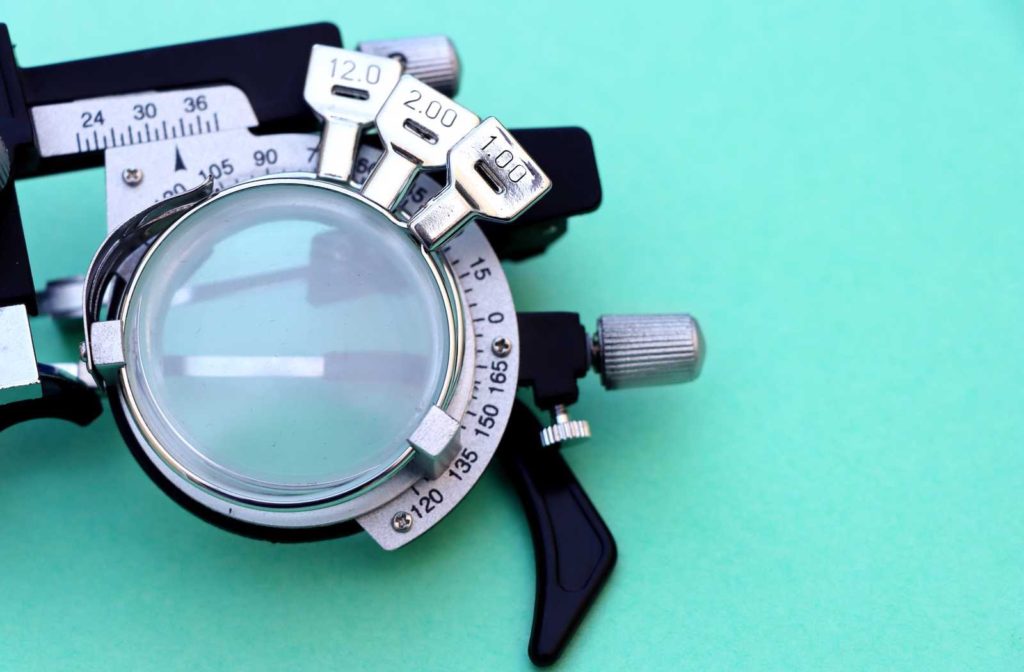If you get an eye exam as a child or adult, you stand a chance of getting a myopia diagnosis. Myopia, also known as nearsightedness, has grown quite common, with nearly 30% of Canadians affected by it.
Sometimes it’s as easy as putting on a pair of prescription glasses and calling it a day. But if your child has worsening myopia, they might be at risk of blindness down the road. One primary source of this type of blindness is retinal detachment, and myopia can be a risk factor.
How Your Retina Works
Your retina is a thin, stretched out membrane spread across the inner wall at the back of your eye. This membrane is actually an array of light-sensitive cells sitting on top of a soft, veiny tissue that supplies blood to the retina. That way, it can convert light into brain signals and send it through the optic nerve.
What is Retinal Detachment?
Retinal detachment (RD) is a medical emergency where your retina’s cells part from the underlying blood vessels. It’s more an effect stemming from several possible causes than something you get spontaneously. There are 3 major types:
- Rhegmatogenous: a tear forms in the retina that allows fluid to pour in behind the light-detecting cells’ surface into the underlying tissues. When these cells loosen from the tiny veins supplying your eye oxygen, they can no longer function as they detect light, and you can lose vision.
- Posterior vitreous detachment (PVD) refers to a common phenomenon where the gel-like substance in the main chamber of your eye softens or slowly liquefies and pulls away from your retina. Rhegmatogenous RD can be a complication of PVD, but not every time.
- Tractional: scar tissue is the main difference with this type of retinal detachment. Scar tissue replaces the retina’s surface, pulling the cell layer away from the underlying tissue. It’s often found in patients with out-of-control diabetes.
- Exudative: like a rhegmatogenous RD, there’s fluid buildup beneath the retina, but unlike rhegmatogenous RD, there’s no hole or tear to let the fluid in. Typical causes include age-related macular degeneration (AMD), eye injury, tumors, or inflammatory disorders.
As your retina loses a secure connection with the veiny tissue underneath, it becomes harder to do its job, and vision loss (blindness) becomes likely.
What is Myopia?
Myopia is a refractive error, meaning your eyes can’t focus an image into a small point on your retina efficiently. That image falls short of your retina. It could be due to a cornea that’s too steep and conical in shape, a deformed ocular lens, or an elongated (football shaped) eyeball.
Myopia Symptoms
Typical symptoms of myopia include:
- Difficulty seeing things far away
- Squinting to see clearly
- Eye strain
Axial Length
Axial length is the indicator of whether an eye is spherical, as is healthy, or football-shaped. It’s the length from the front to the back of the eye. If there’s an elongated shape to the eye, axial length will be too long.
Ideally, a person’s axial length should measure between 23mm and 24mm by adulthood. Moreover, each age group’s average axial length should measure 22.36mm at 6 years, 23.10mm at 9 years, 23.41mm at 15 years, reaching 23.67mm near 18. Any longer, and it could be a more extreme version of myopia.
High Myopia
Optometrists recognize different types of myopia: low myopia, moderate myopia, and high myopia. High myopia is likely with a prescription of -5.00 diopters or worse, or perhaps in excess of -6.00 diopters. However, prescription power isn’t the only factor in determining whether a patient’s myopia is pathological. Axial length becomes a significant indicator because it can change with high myopia.
With high myopia, patients endure increased risks of cataracts, glaucoma, retinal detachment, and myopic maculopathy (which shares similar effects with age-related macular degeneration).
The Link Between Myopia & Retinal Detachment
The link between a myopic condition and the event of a retinal detachment (and which kind of RD) can get a little hazy. One study tried to tie high myopia to rhegmatogenous retinal detachment.
But in this study, the authors recognized limitations to that conclusion. Although there was a correlation between axial length elongation (a football shape), and rhegmatogenous retinal detachment, they didn’t find one to be a direct cause for the other.
There was also a limit to the data involved, with only 1 year to observe patients and not enough control for either axial length or refractive error in each subject. Still, a high correlation suggests that high myopia might at least remain a risk factor for RRD.
What Else Can Happen with High Myopia?
Sometimes glaucoma or eye surgery can cause retinal detachment. In that case, it might be a complicated explanation of what condition causes what complication. But in the end, the answer might just be better put simply as the following: high myopia can lead to some form of retinal detachment.
Myopia Control
Some methods stand out in slowing the progression of myopia in children. These are collectively known as myopia control.
Myopia control provides a means for managing the remote or eventual risk of retinal detachment later in life. By slowing myopia and keeping it from worsening, you make the risk of complications from high myopia (like retinal detachment) much more remote. We employ a few exciting options to slow myopia progression from low or moderate to high myopia:
Multifocal Contact Lenses
These contact lenses come in monthly or daily disposable options, and they provide different prescriptions in concentric rings (like the shape of a target) out from the center of the lens. Multifocal lenses have been proven to slow myopic progression in children.
Misight Contact Lenses
These innovative lenses provide different zones like multifocal, but they don’t correct for different prescription powers in the same way. Some of the concentric rings do not correct for myopia. That way, the retina isn’t struggling to focus on the periphery due to eyeball elongation. They, too, should slow the progression (axial elongation) of myopia in children.
Myovision & Myopilux Eyeglass Lenses
These eyeglass lenses employ effects similar to bifocals, the kind prescribed for presbyopia. Peripheral zones correct at different powers in what’s called “peripheral defocus management.” They help the wearer avoid eye strain due to elongation of the eyeball.
Controlling Myopia to Avoid Complications
Retinal detachment due to myopia is more akin to a series of falling dominoes, with myopia at the beginning and retinal detachment only resulting in case others fall in just the right way. On the other hand, RD can occur in patients with no signs of myopia at all.
Either way, myopia control can help you avoid RD, one of myopia’s worst-case scenarios. If you book an appointment in Regina or Grenfell, we can get your child an eye exam and determine whether myopia control can help.




